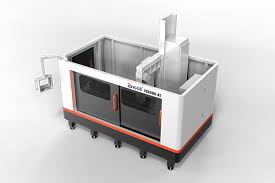The Differences Between Agile Business Analysts and Product Owners

“Product Owner” and “Agile Business Analyst” are frequently used in business processes, often leaving many wondering about their respective functions and differences. Enrolling in an Agile Business Analysis Course and understanding the subtle differences between these two vital positions becomes essential as the corporate world welcomes agility with open arms. In this blog, we will look at the differences in roles with regard to Agile Business Analyst vs Product Owner.
Table of Contents
- The Agile Business Analyst’s Craft
- The Product Owner’s Role
- Collaboration Between Agile Business Analysts and Product Owners
- Navigating Requirements
- Strategic Decision-Making
- Ensuring Stakeholder Alignment
- Key Differences: Agile Business Analyst vs Product Owner
- Focus and Expertise
- Hands-on Involvement
- Communication Styles
- Conclusion
The Agile Business Analyst’s Craft
Enrolling in an Agile business analysis course is akin to venturing into the domain of optimised productivity. Agile Business Analysts (BAs) carefully consider the requirements and complexities of projects; they are the architects of flexibility. They work with stakeholders across a broad landscape to uncover requirements and turn them into insights that can be implemented.
An Agile business analysis course, a pillar of the Agile methodology, gives these analysts the skills to negotiate the unpredictable waters of project development. These courses sharpen their abilities to gather requirements, facilitate cross-team collaboration, and ensure the project aligns with corporate goals. Agile Business Analysts are the ship’s navigators, guiding it through the constantly shifting tides of technology and market demands.
The Product Owner’s Role
The Product Owner is in charge of guiding the project toward success by operating the Agile ship. Product Owners have a variety of roles that require a combination of strategic thought and practical experience. In contrast to the Agile Business Analyst, the Product Owner has a close relationship with the development team and ensures that their vision is realised in a physical product.
When comparing an Agile Business Analyst to a Product Owner, it becomes clear that the former is more focused on comprehending and communicating requirements, while the latter is more involved in making decisions that directly affect the product’s development. This calls for an acute awareness of user needs and market trends and the capacity to act quickly while maintaining alignment with the overall corporate objectives.
Collaboration Between Agile Business Analysts and Product Owners
Collaboration isn’t just a catchphrase in Agile; it’s the core that drives development. Product Owners and Agile Business Analysts collaborate closely, developing a symbiotic partnership in which each party benefits from the insights the other provides.
Navigating Requirements
An Agile business analysis course gives analysts the tools they need to gather requirements from different stakeholders and distil them. They do more than just document; they also serve as interpreters, ensuring the project team is aware of the subtleties and complexities of user demands. The success of a project is based on this proactive approach.
Strategic Decision-Making
As the Agile Business Analyst is engrossed in requirements analysis, the Product Owner assumes responsibility for making strategic decisions. In addition to focusing on what the product should accomplish, they also consider why it should do it. This strategic perspective necessitates a thorough comprehension of consumer demands, market dynamics, and the capacity to make choices consistent with the overall business plan.
Ensuring Stakeholder Alignment
Agile Business Analysts do more than just document; they are essential to bringing disparate parties together. Their ability to communicate effectively and their comprehension of technical and business issues allow them to bridge gaps and guarantee that all parties work toward the same goal. By promoting collaboration among stakeholders, they establish a unified atmosphere where all parties work together to achieve project objectives.
Key Differences: Agile Business Analyst vs Product Owner
Focus and Expertise
Agile Business Analyst: Their primary goals are comprehending, gathering, and recording requirements. Their speciality is making sure the project is in line with corporate objectives.
Product Owner: They prioritise features, make strategic decisions, and ensure the finished product meets consumer expectations. Their knowledge of consumer demands and market trends is extensive.
Hands-on Involvement
Agile Business Analyst: Although they work on projects, their primary focus is analysis and documentation, helping close the communication gap between stakeholders and the development team.
Product Owner: Taking an active role in developing and influencing the final product through decisions. They work closely with the development team to ensure the final product follows the planned approach.
Communication Styles
Agile Business Analyst: Skilled communicators mediate issues between technical stakeholders and those who are not. They promote cooperation and comprehension by guaranteeing that all individuals communicate in the same language.
Product Owner: Strategic visionary communicators, they explain the “why” behind choices. Their approach to communication ensures that teams are in sync with the overall business plan and that everyone is working toward the same objectives.
Conclusion
The Agile Business Analyst and the Product Owner are vital components in developing Agile projects. Instead of a hierarchy, the difference is in the complementing skills that each function brings to the table. When comparing Agile Business Analysts and Product Owners, the goal is not to establish superiority but to create a synergistic partnership where communication and understanding are combined to sail the turbulent waters of business innovation successfully.
Thus, as companies venture into Agile, they are joined by proficient Agile Business Analysts who painstakingly map out the route and Product Owners who guide the vessel towards strategic triumph. When combined, they present a cohesive face that captures the spirit of agility in the dynamic realm of business.




